Top 10 Largest Countries In Africa
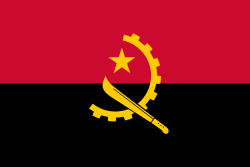
Africa is the second-largest continent in the world, with a total land area of approximately 30 million square kilometers. It is home to 54 independent countries and two territories, and its population exceeds 1.3 billion people. The continent is known for its diversity in culture, language, and ethnicity, as well as its vast landscapes ranging from deserts to rainforests. In this article, we will look at the top 10 largest states in Africa in terms of land area.
Biggest Countries In Africa
- Algeria
- Democratic Republic of Congo
- Sudan
- Libya
- Chad
- Niger
- Angola
- Mali
- South Africa
- Ethiopia
1. Algeria
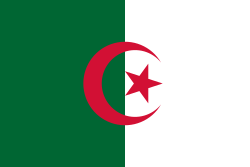
Algeria is the largest country in Africa, covering an area of 2.38 million square kilometers. It is located in North Africa and shares borders with Tunisia, Libya, Niger, Mali, Mauritania, Western Sahara, Morocco, and the Mediterranean Sea. The country is known for its rich history and diverse landscapes, which include the Sahara Desert, the Atlas Mountains, and the Mediterranean coastline. Algeria has a population of over 43 million people, and its official language is Arabic.
2. Democratic Republic of Congo

The Democratic Republic of Congo, also known as DRC, is the second-largest country in Africa, with an area of 2.35 million square kilometers. It is located in central Africa and shares borders with nine other countries, including Angola, Zambia, Tanzania, and Uganda. The country is known for its vast rainforests, wildlife, and natural resources, including minerals like cobalt, copper, and diamonds. DRC has a population of over 101 million people, and its official language is French.
3. Sudan
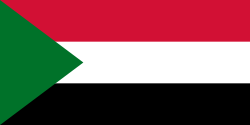
Sudan is the third-largest country in Africa, covering an area of 1.89 million square kilometers. It is located in northeastern Africa and shares borders with Egypt, Libya, Chad, Central African Republic, South Sudan, Ethiopia, and Eritrea. The country is known for its diverse culture, which includes Arab, African, and Islamic influences. Sudan has a population of over 44 million people, and its official languages are Arabic and English.
4. Libya

Libya is the fourth-largest country in Africa, with an area of 1.76 million square kilometers. It is located in North Africa and shares borders with Tunisia, Algeria, Niger, Chad, Sudan, and the Mediterranean Sea. The country is known for its vast deserts, including the Sahara, and its ancient history, which includes the ruins of the ancient Roman city of Leptis Magna. Libya has a population of over 6.8 million people, and its official language is Arabic.
5. Chad

READ ALSO » Top 10 Largest/Biggest Airport In Africa 2024
Chad is the fifth-largest country in Africa, covering an area of 1.28 million square kilometers. It is located in central Africa and shares borders with Libya, Sudan, the Central African Republic, Cameroon, Nigeria, and Niger. The country is known for its diverse culture, which includes over 200 different ethnic groups, and its natural resources, including oil and gold. Chad has a population of over 16 million people, and its official languages are French and Arabic.
6. Niger
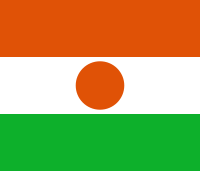
Niger is the sixth-largest country in Africa, with an area of 1.27 million square kilometers. It is located in western Africa and shares borders with Libya, Algeria, Mali, Burkina Faso, Benin, Nigeria, and Chad. The country is known for its vast desert landscapes, including the Sahara and the Sahel, and its diverse ethnic groups, including the Tuareg, Hausa, and Fulani. Niger has a population of over 25 million people, and its official language is French.
7. Angola
Angola is the seventh-largest country in Africa, covering an area of 1.25 million square kilometers. It is located in southern Africa and shares borders with Namibia, Zambia, the Democratic Republic of the Congo, and the Atlantic Ocean. The country is known for its rich cultural heritage, including traditional music and dance, as well as its natural resources, including diamonds, oil, and gas. Angola has a population of over 31 million people, and its official language is Portuguese.
8. Mali

Mali is the eighth-largest country in Africa, with an area of 1.24 million square kilometers. It is located in West Africa and shares borders with Algeria, Niger, Burkina Faso, Ivory Coast, Guinea, Senegal, and Mauritania. The country is known for its vibrant music scene, as well as its historical significance, including the ancient city of Timbuktu. Mali has a population of over 20 million people, and its official language is French.
9. South Africa
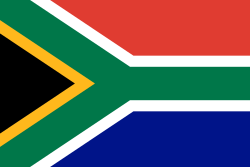
South Africa is the ninth-largest country in Africa, covering an area of 1.22 million square kilometers. It is located in southern Africa and shares borders with Namibia, Botswana, Zimbabwe, Mozambique, Eswatini, and Lesotho. The country is known for its diverse culture, including the Zulu and Xhosa ethnic groups, as well as its natural beauty, including Table Mountain and Kruger National Park. South Africa has a population of over 59 million people, and its official languages are English, Afrikaans, and Zulu.
10. Ethiopia
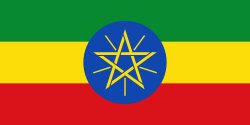
Ethiopia is the tenth-largest country in Africa, with an area of 1.1 million square kilometers. It is located in the Horn of Africa and shares borders with Eritrea, Djibouti, Somalia, Kenya, South Sudan, and Sudan. The country is known for its rich cultural heritage, including the ancient city of Axum and the rock-hewn churches of Lalibela, as well as its diverse landscapes, including the Simien Mountains and the Danakil Depression. Ethiopia has a population of over 116 million people, and its official language is Amharic.
In conclusion, Africa is a vast continent with a diverse range of cultures, languages, and landscapes. The top 10 largest states in Africa, including Algeria, DRC, Sudan, Libya, Chad, Niger, Angola, Mali, South Africa, and Ethiopia, reflect this diversity, with each country having its own unique history, culture, and natural resources. Understanding the geography and demographics of these countries is crucial to understanding Africa as a whole, and the role it plays in the global community.
READ ALSO » Top 10 Largest Markets In Africa
